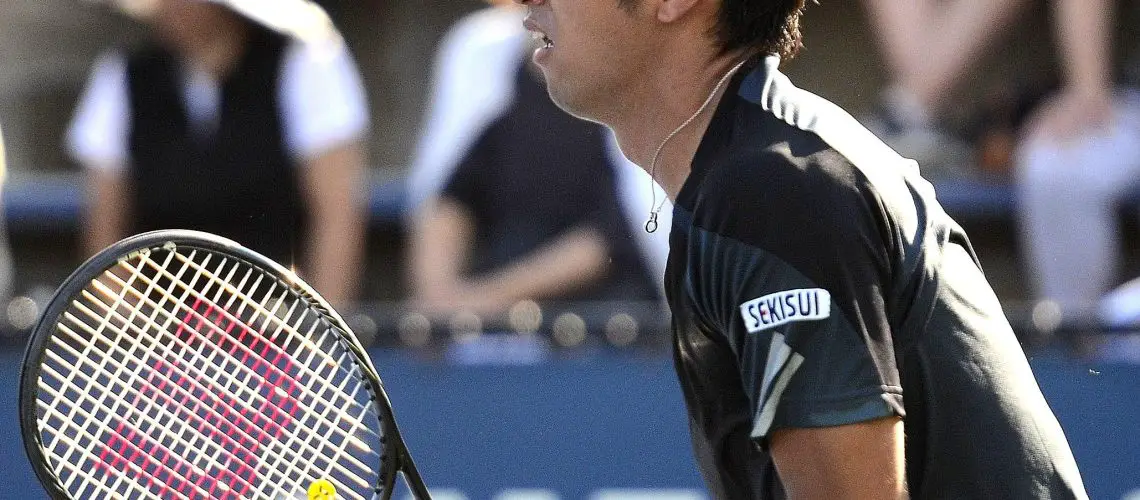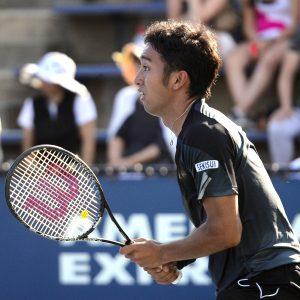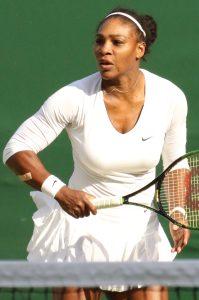We may earn money or products from the companies mentioned in this post.
Introduction

A Brief History of Tennis Player Retirements
Tennis, a sport known for its physically demanding nature, has seen numerous players retire early in their careers These retirements have often shocked fans and left them wondering what could have been if these talented athletes had continued playing On the other hand, there are players who defy age and continue to compete at a high level well into their late years Let’s take a closer look at some notable examples in both categories
Notable Players Who Retired Early in Their Career
In the world of tennis, there have been several players who retired prematurely, leaving fans with unfulfilled expectations One such player is Bjorn Borg, a Swedish tennis legend who won 11 Grand Slam titles before abruptly retiring at the age of 26 Borg cited burnout and loss of motivation as reasons for his retirement Another example is Justine Henin, a Belgian tennis star who retired at the age of 25 despite being ranked number one in the world Henin decided to step away from the sport due to personal reasons and wanting to focus on other aspects of her life
Players Who Continued Playing Into Their Late Years
While early retirements may grab headlines, there are also players who defy expectations by continuing to play well beyond what is considered typical in professional tennis One such player is Roger Federer, often regarded as one of the greatest tennis players of all time Despite being in his late thirties and facing multiple injuries throughout his career, Federer continues to compete at an elite level against much younger opponents Another example is Serena Williams, who remains a dominant force in women’s tennis despite approaching her forties and becoming a mother
Factors Contributing to Retirement Decisions
The decision to retire from professional tennis is influenced by various factors, both physical and personal Physical health and injuries play a significant role in a player’s retirement decision The toll that years of intense training and competition take on the body can lead to chronic injuries or decreased performance Additionally, personal life factors such as family commitments, desire for new challenges, or loss of motivation can also contribute to an athlete’s decision to hang up their racket
Age-related trends in tennis player retirements

In the world of professional tennis, retirement age can vary significantly among players Both men’s and women’s tennis see athletes stepping away from the game at different stages of their careers Let’s explore the average age of retirement in singles and doubles players, as well as the factors that influence when these athletes decide to call it quits
Average age of retirement in men’s and women’s tennis
When it comes to retiring from professional tennis, both men and women have their own unique patterns On average, male players tend to retire slightly later than their female counterparts This can be attributed to various factors such as physical endurance, playing style preferences, and career longevity
Furthermore, there is a notable difference between singles and doubles players when it comes to retirement age Singles players often retire earlier compared to doubles specialists The demanding nature of singles matches puts greater strain on the body over time, leading some athletes to consider retirement at an earlier stage in their careers
Factors influencing retirement age
The decision to retire from professional tennis is influenced by a combination of internal and external factors Over time, changes in the sport itself have played a role in shaping retirement trends
Changes in the sport over time
-
Equipment advancements:
As technology has evolved, so has tennis equipment Racket technology improvements may require adjustments in playing style or put additional stress on certain parts of the body -
Training methods and fitness levels:
Athletes today benefit from improved training techniques and access to advanced fitness programs However, these advancements also increase expectations for maintaining peak performance levels over an extended period of time
Financial security and endorsements
Financial considerations also play a significant role in retirement decisions Tennis players who have achieved financial stability through prize money, sponsorships, and endorsement deals may feel more inclined to retire at an earlier age The availability of lucrative opportunities beyond the playing court can provide additional motivation for players to transition into new ventures
In conclusion, the average age of retirement in tennis differs between men and women as well as singles and doubles players Factors such as changes in the sport’s landscape and financial security influence when athletes decide to step away from professional competition Understanding these age-related trends can shed light on the unique journeys of tennis players throughout their careers
Impact of injuries on tennis player retirements

Injuries can have a profound impact on the careers of professional tennis players, often leading to premature retirements The physical demands of the sport, combined with the intensity and frequency of matches, make tennis players particularly susceptible to various types of injuries Understanding the common injuries that can lead to retirement is crucial in devising effective prevention strategies and ensuring the longevity of a player’s career
Common injuries leading to retirement
Tennis players face two main categories of injuries: chronic issues and acute injuries Chronic issues are typically caused by repetitive stress on certain body parts over an extended period These include notorious conditions like tennis elbow, which affects the tendons in the forearm and causes pain and inflammation On the other hand, acute injuries occur suddenly due to trauma or accidents during matches or training sessions Examples include torn ligaments, fractures, or severe sprains
-
Repetitive stress injuries:
One common chronic issue in tennis is known as tennis elbow This condition results from constant strain on the tendons that connect the forearm muscles to the elbow joint -
Acute injuries:
Acute injuries can be devastating for a player’s career Torn ligaments, especially in areas like knees or ankles, may require surgery and extensive rehabilitation
Rehabilitation process
The rehabilitation process following an injury plays a pivotal role in determining whether a player can return to their previous performance level The duration and success rates vary depending on several factors such as the severity of the injury, individual healing abilities, access to medical resources, and adherence to rehabilitation protocols
-
Duration:
Rehabilitation timelines can range from a few weeks to several months, or even longer for severe injuries -
Success rates:
While some players fully recover and resume their careers, others might struggle to regain their previous performance levels due to lingering physical limitations or psychological barriers -
Return to previous performance levels:
Achieving the same level of play after an injury requires dedication, perseverance, and often working with specialized medical professionals and trainers
Injury prevention strategies for extending careers
Given the potential career-ending impact of injuries, tennis players must prioritize injury prevention This involves a comprehensive approach that encompasses various aspects of training and conditioning
-
Proper warm-up and cool-down:
Implementing structured warm-up routines before matches or training sessions can help prepare muscles and reduce the risk of acute injuries Similarly, cooling down exercises aid in recovery post-exertion -
Cross-training:
Engaging in activities other than tennis can help develop overall fitness, strengthen different muscle groups, and prevent overuse injuries caused by repetitive motions -
Maintaining strength and flexibility:
Regular strength training exercises targeting specific muscle groups used in tennis can enhance stability and reduce the risk of chronic issues Additionally, maintaining flexibility through stretching routines aids in preventing muscle strains -
Listening to the body:
Recognizing signs of fatigue or pain and allowing adequate rest periods is vital for avoiding overexertion and potential injuries
To extend their careers successfully, tennis players need to prioritize both injury prevention strategies as well as proper rehabilitation protocols when faced with an injury By understanding common injuries leading to retirement, implementing effective preventive measures, and taking proactive steps towards recovery, players can increase their chances of enjoying a long and successful career on the court
Managing personal life and career transitions post-retirement

Retirement is a significant milestone that brings about both excitement and uncertainty As athletes enter this new phase of life, they must navigate not only their own personal adjustments but also consider the impact it will have on their families Balancing professional aspirations with personal commitments becomes crucial for a smooth transition
Family considerations
1 Balancing professional and personal life:
Transitioning from a demanding sports career to retirement can offer newfound flexibility in managing time between work and family Athletes often find themselves with more availability to spend quality moments with loved ones, attend family events, or simply enjoy downtime together This shift can strengthen family bonds and create lasting memories
2 Impact on family relationships during retirement decision-making:
The decision to retire is not made in isolation; it affects the entire family unit Open communication regarding retirement plans is vital to ensure all voices are heard and respected Family members may experience mixed emotions during this process, as they too adjust to a new dynamic where the athlete’s schedule becomes more flexible Collaborative decision-making can help foster understanding and support within the family
Career transitions outside competitive play
Retirement doesn’t mean an end to involvement in the sport that athletes love; rather, it presents opportunities for new roles within the industry
-
Coaching opportunities:
-
Broadcasting or sports commentary positions:
Many retired athletes find fulfillment in sharing their knowledge and experience by becoming coaches or mentors to aspiring athletes Coaching allows them to stay connected to the sport while imparting valuable skills and lessons learned throughout their careers
For those who enjoy being in the spotlight, transitioning into broadcasting or sports commentary can be a natural fit Former athletes can provide unique insights and analysis, offering viewers a deeper understanding of the game This avenue allows them to stay connected to the sport and engage with fans on a different level
Maintaining mental well-being during career transition
Retirement often brings about a mix of emotions for athletes It is essential to prioritize mental well-being during this period of adjustment
a) Coping with feelings of loss or failure:
Retirement may trigger feelings of loss, as athletes say goodbye to a significant part of their identity It is important to address these emotions and seek support from loved ones, friends, or professionals if needed Recognizing that retirement marks the beginning of a new chapter rather than a personal failure is crucial for maintaining positive mental health
b) Staying involved in the sport through other avenues:
Athletes can explore alternative ways to stay connected and engaged with their beloved sport post-retirement This could include volunteering, coaching at grassroots levels, or participating in sports-related community initiatives By remaining involved in some capacity, retired athletes can continue to contribute to the sport they love while finding personal fulfillment in giving back
Useful Links

Why do tennis players retire young in comparison to other …
What Happens When a Player Retires, During Rain Delays …
Roger Federer says he is retiring from pro tennis at age 41
What Does Retired Mean In A Tennis Match
10 male tennis players who retired in 2022 ft. Roger …
Federer, Del Potro Headline 2022 Retirements
Retired Matches Among Male Professional Tennis Players
Why does the average tennis player retire so young?
Roger Federer announces retirement; 20-time Grand Slam …
Life after retirement for tennis players
After Retiring at 25, Ashleigh Barty Is Comfortable in a Life …
Brady Bunch: Could Kyrgios, Venus and Murray be part of …
Roger Federer to retire from tennis
Ashleigh Barty: A year on from Australian Open triumph …
Incomplete & Retired Matches
Roger Federer announces retirement from tennis after …
Tennis retirement: Do women last longer than men?
Roger Federer announces retirement from tennis
Roger Federer says he’s retiring from tennis after upcoming …






